Revolutionizing the PC Ecosystem: Qualcomm's Vision for PCs and AI
![]() 05/21 2025
05/21 2025
![]() 500
500
Produced by Zhineng Zhixin
At Computex Taipei 2025, Qualcomm CEO Cristiano Amon unveiled the company's groundbreaking strategic vision for PCs and AI.
From the evolution of PC chip architecture to the deployment of enterprise-grade AI applications and advancements in edge AI computing, Qualcomm aims to pave the way for future AI-powered PCs through its Snapdragon X Platform and Hexagon NPU.
Drawing from Amon's keynote, we delve into Qualcomm's core AI strategy and its approach to ecosystem development and collaboration enhancement.
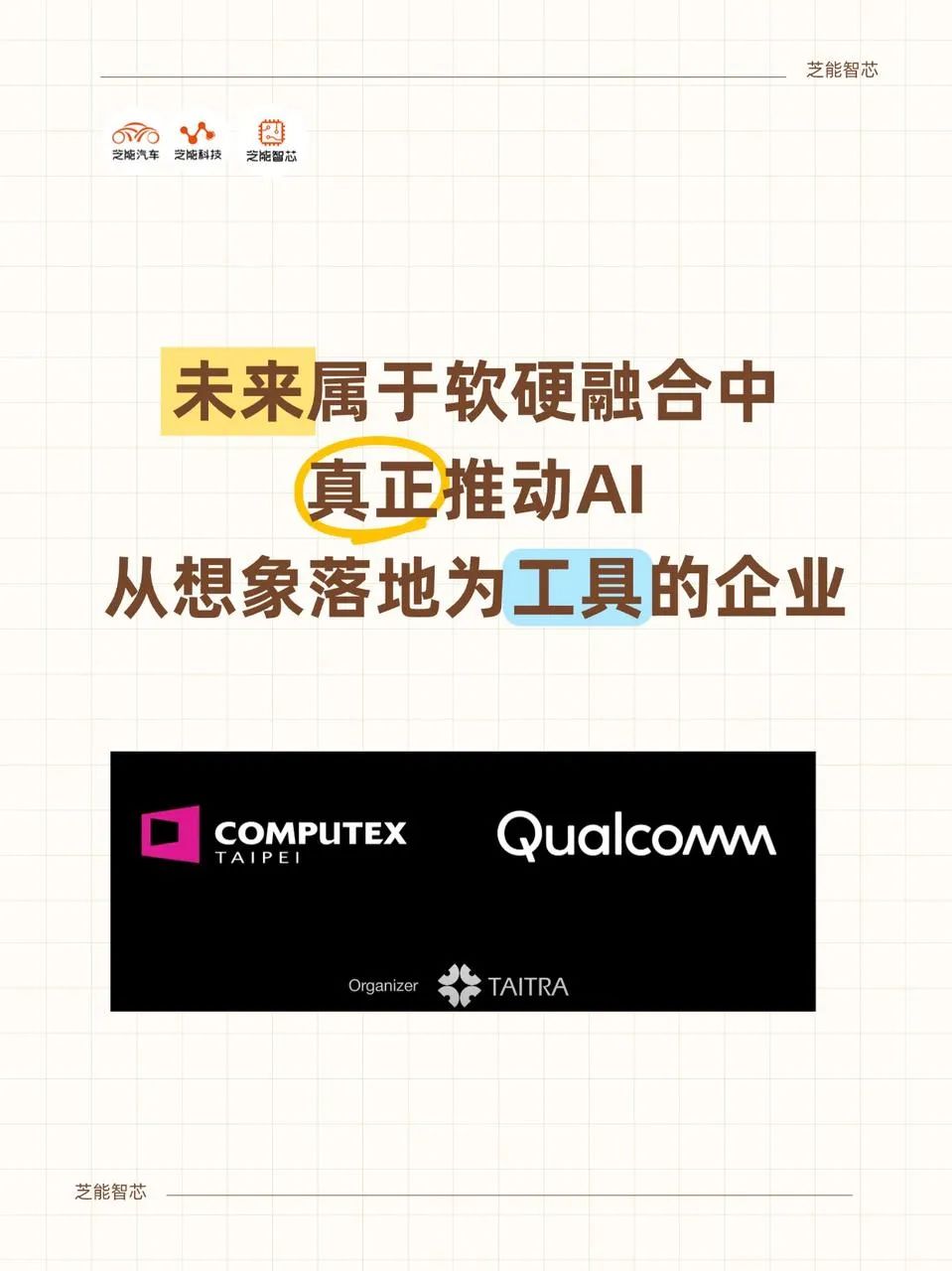
Part 1
Starting from the "Heart" of PCs: Chip Innovation in the AI Era
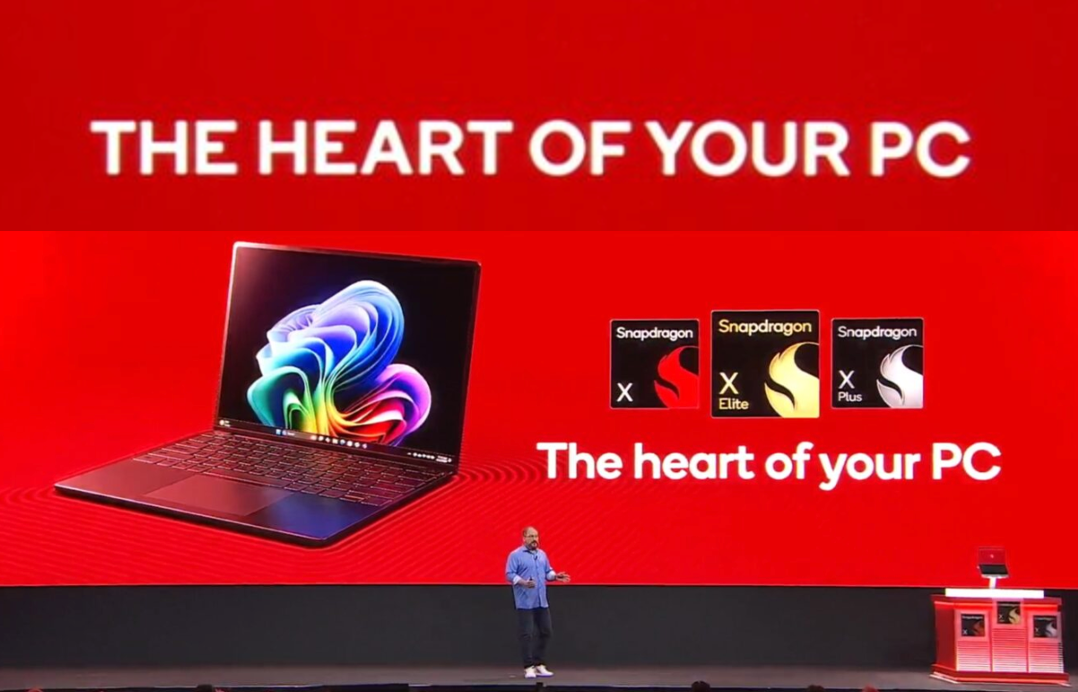
At Computex 2025, Cristiano Amon didn't flood the stage with chip announcements but instead focused on the "heart" of PCs. For Qualcomm, the Snapdragon X Platform transcends being just a chip; it serves as an operational foundation that propels localized AI computing.
Since the launch of the Snapdragon X Elite last year, Qualcomm has not yet fully disrupted the x86 dominance, but the Oryon core's high energy efficiency, the rapid proliferation of Arm64 applications, and the Hexagon NPU's inference capabilities have laid the groundwork for an alternative in the PC industry chain.
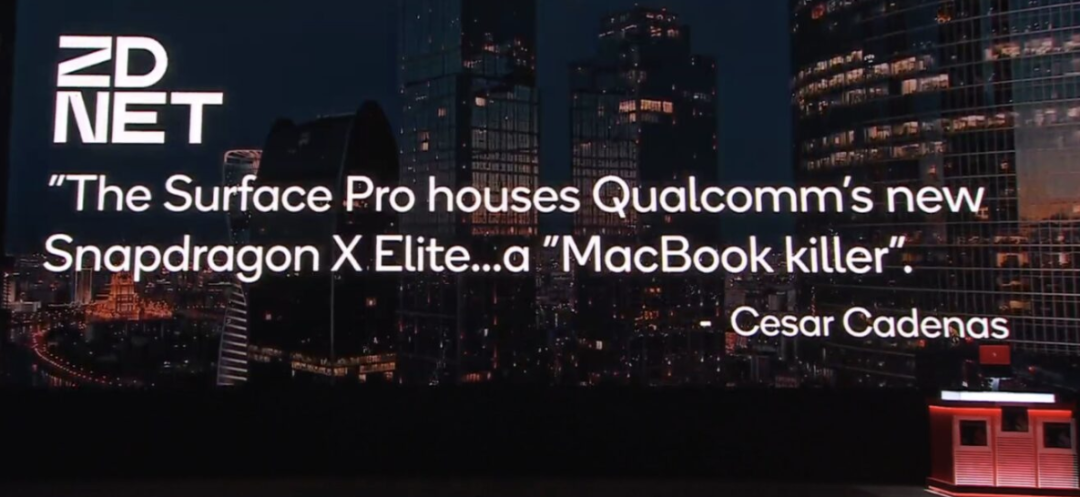
Currently, over 750 native Arm64 applications run on Snapdragon PCs, with users spending up to 93% of their time within these native applications. This data surpasses industry expectations, affirming Qualcomm's sustained investment in the Arm platform.
Moreover, Qualcomm's deep integration with Microsoft positions the Snapdragon platform as a strong contender for the Copilot+ AI PC standard.
Notably, PC giants such as ASUS, HP, and Lenovo have showcased their new AI laptops based on the Snapdragon platform, each boasting the "broadest lineup of Snapdragon AI PCs".
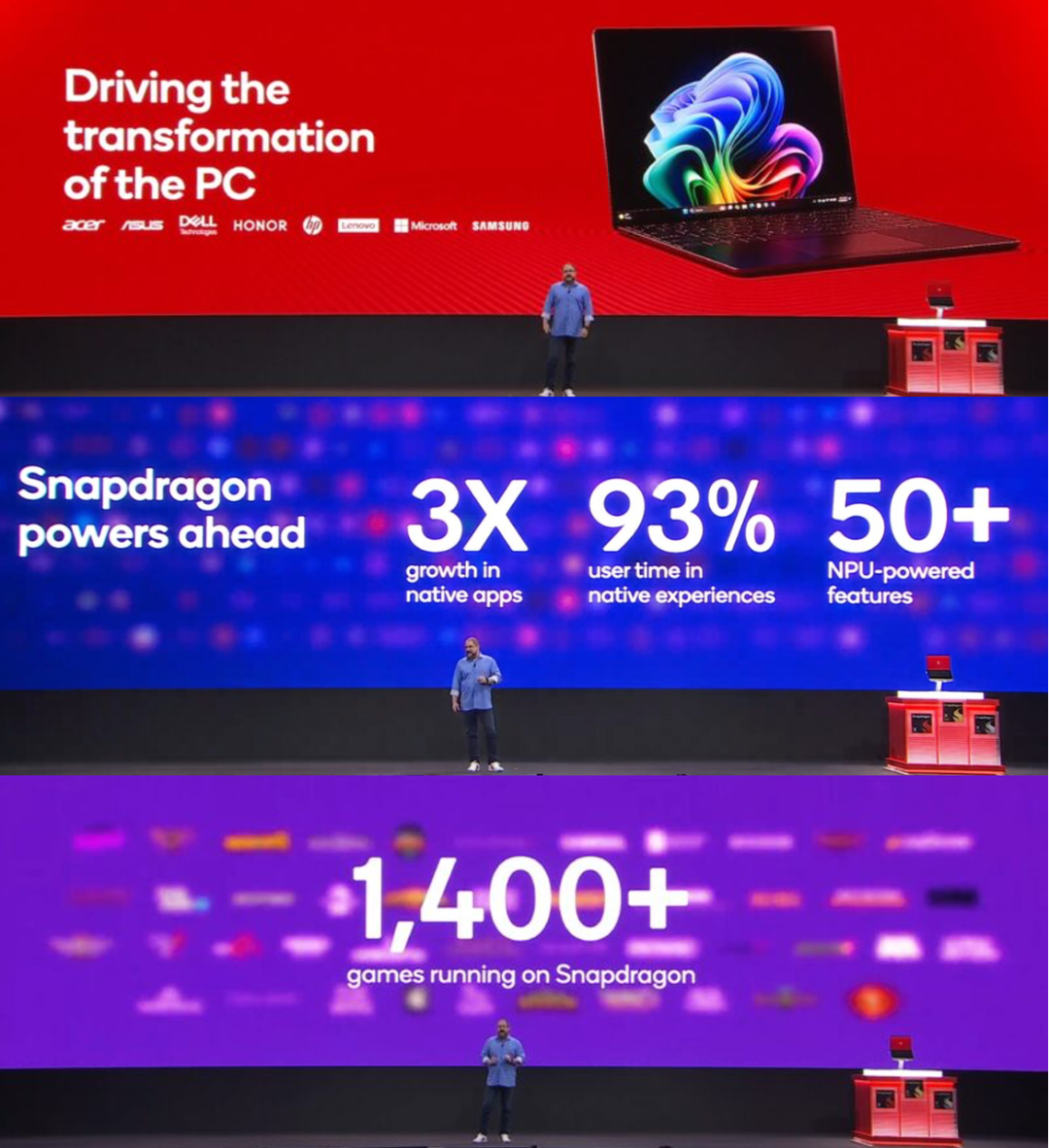
Yet, chips are merely the foundation. Qualcomm clarified in its speech that AI will become the operating system of future PCs, signifying that AI agents will revolutionize human-computer interaction, productivity tools, and even enterprise software usage.
For instance, HP's Omnibook 5 series integrates AI features enabling new scenarios like audio/video summarization and file search optimization. Lenovo, on the other hand, has launched the AI Now agent framework, enabling device-level personalized operations.
These innovations are gradually elevating AI from voice assistants to system scheduling and workflow management, truly embodying AI as a platform.
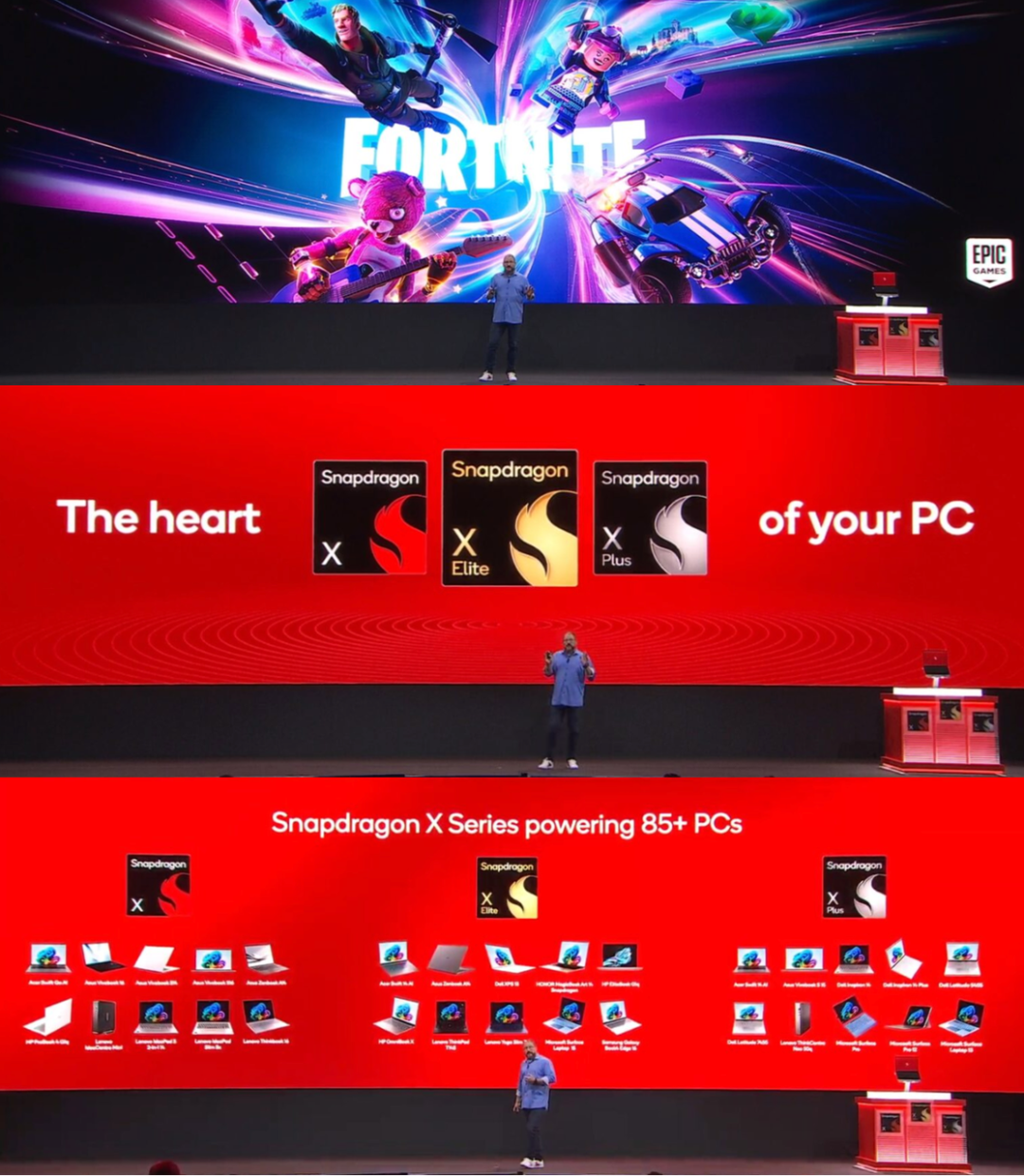
Qualcomm's commitment to advancing PC AI applications is also evident in gaming. The Snapdragon X Platform currently supports over 1400 games, including "Fortnite" and its anti-cheat system, marking a significant breakthrough for Arm-based laptops in gaming.
Amon acknowledges that the Windows on Arm ecosystem is still maturing, with compatibility posing the biggest challenge. However, with continuous improvements in toolchains and the expansion of the native ecosystem, this shortcoming is gradually being addressed.
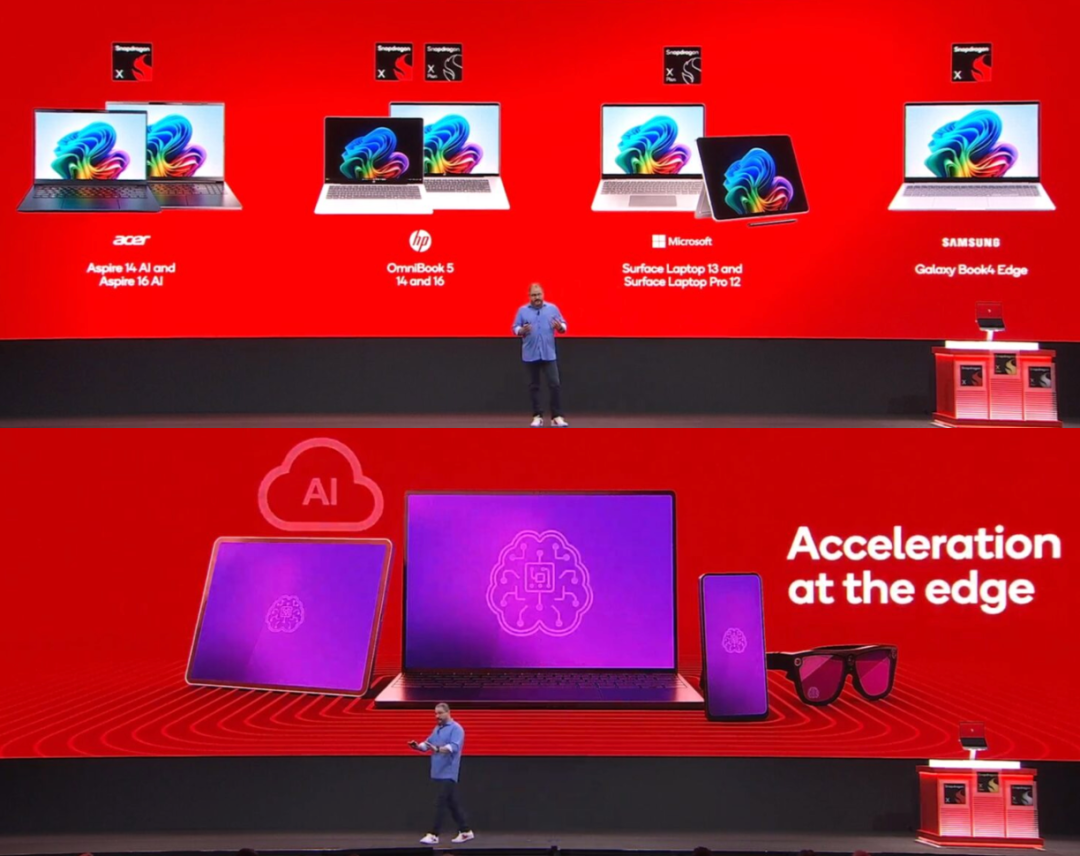
Part 2
Considerations for Edge AI
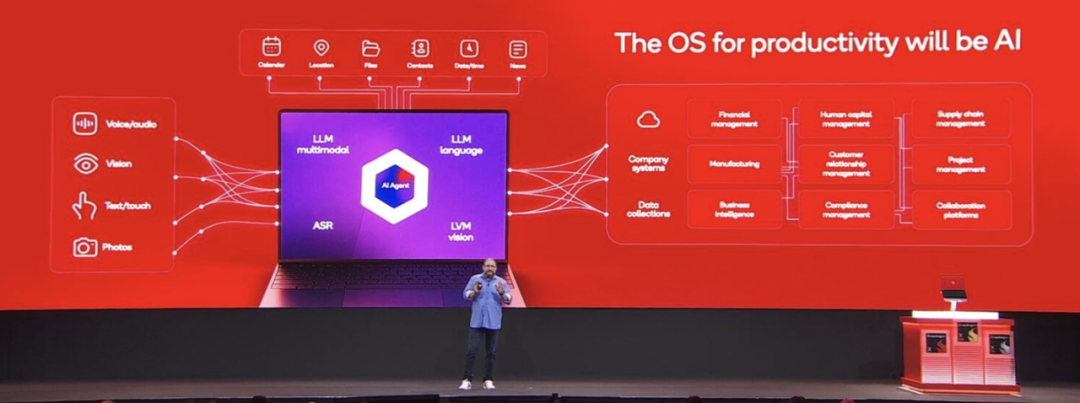

The significance of terminal computing extends beyond desktop-level AI PCs to edge AI devices.
In his speech, Qualcomm introduced the new Context agent model, emphasizing its local NPU execution without the need for cloud data uploads. This design not only aligns with the growing emphasis on privacy but also significantly enhances response speed.
The Context model performs multimodal AI tasks such as speech processing, image recognition, and document summarization. Its scalability and the philosophy of localized computing offer a paradigm for practical edge AI deployment.
The value of the Hexagon NPU is further amplified here, supporting the local execution of multiple LLM models and providing 75 pre-optimized models for developers through the AI Hub.
Docker, as a partner, also demonstrated how Model Runner can directly deploy AI containerized tasks on the Snapdragon X processor.
Qualcomm aims to extend this lightweight, versatile AI computing module to new devices, including smart glasses and industrial terminals, laying the foundation for diverse terminal AI experiences.
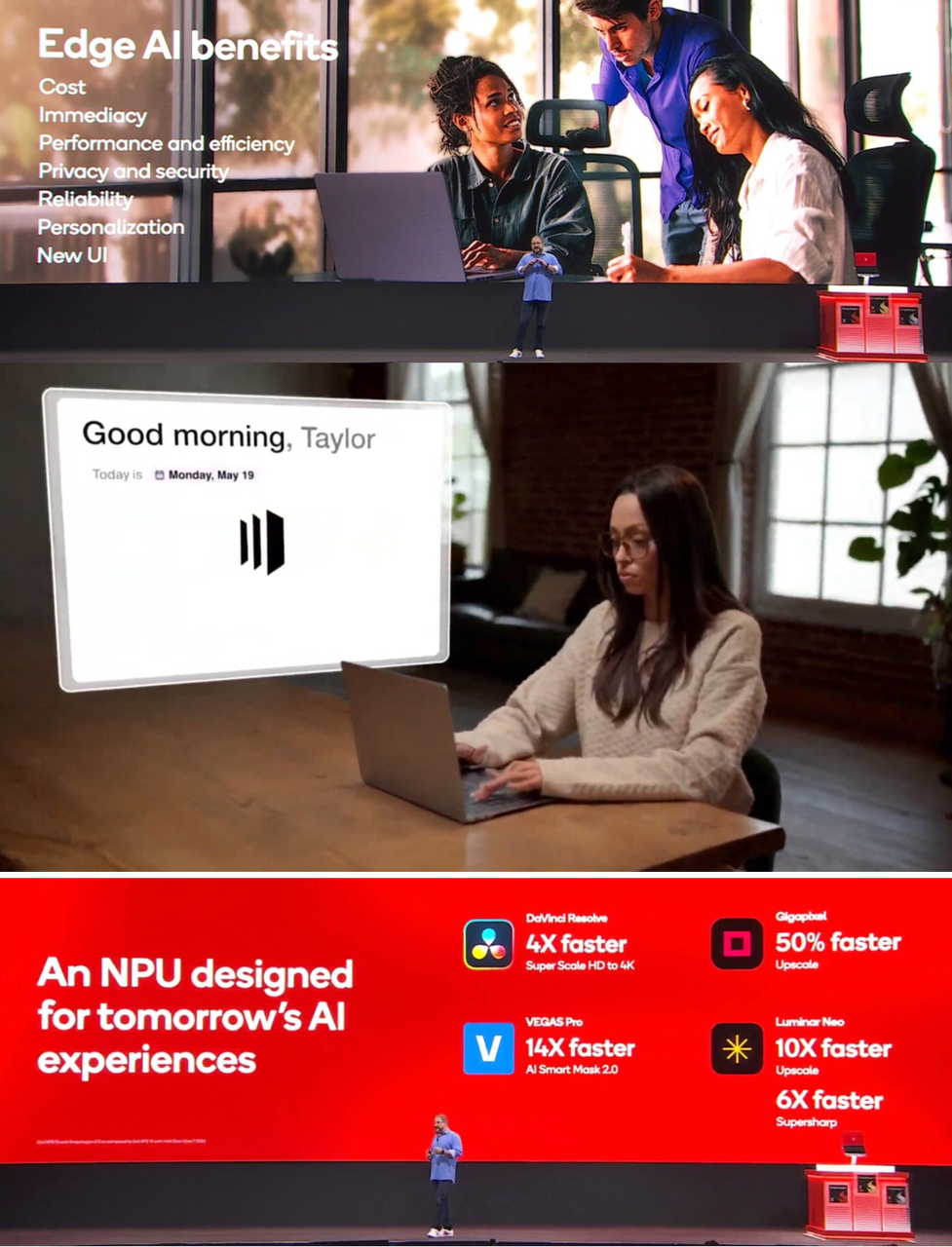
Amon confirmed that Qualcomm will design a new generation of data center-level SoCs based on its proprietary Oryon core, deeply compatible with NVIDIA's NVLink Fusion architecture.
This marks Qualcomm's first direct response to the server market layout three years after acquiring Nuvia, signaling its intent to compete with Amazon Graviton, NVIDIA Grace, and traditional x86 server chips.

As the training and inference of large models become increasingly decoupled, the efficiency ratio of inference performance is highly valued.
Qualcomm intends to enter the edge and mid-sized data center markets with superior performance per watt, leveraging low-power Arm architecture and custom interconnect architecture against the backdrop of AI's migration from the cloud to the edge.
Qualcomm will also establish an AI data center in the Middle East in collaboration with the Saudi Investment Fund, providing AI services from the cloud to the edge. Qualcomm aims to forge a hybrid AI computing ecosystem encompassing chips, platforms, algorithms, and deployment scenarios.
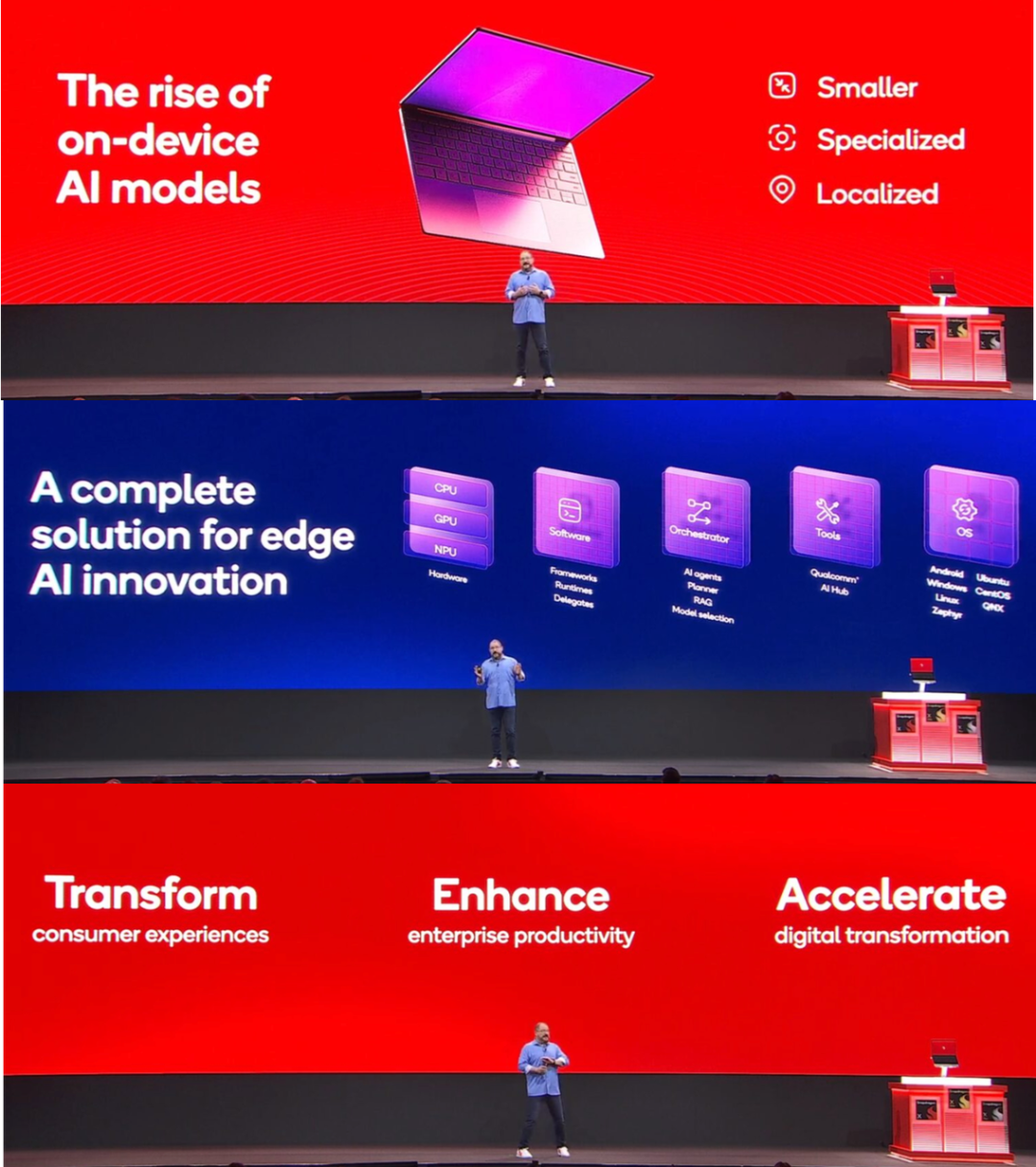
Chip companies that fail to plan accordingly risk falling behind.
Summary
Computex 2025 served as a phased review of the PC ecosystem. Qualcomm's presentation, while not as flashy as NVIDIA's, clearly outlined a new PC ecosystem blueprint powered by Arm architecture, NPU, and agent operating systems. The future belongs to those companies that can genuinely translate AI from imagination to tools in the seamless integration of software and hardware!







